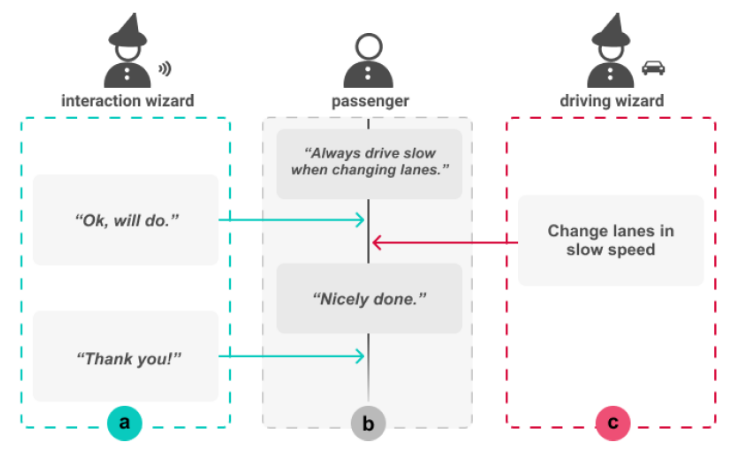Professor Youn-kyung Lim’s team has studied user preferred driving-style guidance as a novel input channel for human participation in fully autonomous vehicles. The leading researcher of this study was Keunwoo Kim in the Department of Industrial Design under Prof. Lim’s guidance, and this study was one of the main studies for his Master’s thesis.
In this work, an on-road Wizard-of-Oz (Figure 1) study was conducted to investigate the guiding experience with an AV agent to reflect the user’s driving-style preferences. As there is a lack of a proper channel for users to express their driving-style needs to control AVs, it is expected that the users of fully autonomous vehicles will need to take more passive roles regardless of their preferences. “Considering the growing concern about the diminished role, ability, and control of humans in highly automated systems, we believe it is an essential starting point to propose the idea of envisioning the future of AV usage that can achieve user agency and user acceptance,” said Keunwoo Kim, paper author.
The study result demonstrated the benefits of the user’s driving- style guidance, specifically with regard to adjusting the AV’s behavior to realize a better fit with the user’s genuine preferences. The empirical findings from the study show the following: 1) the value of driving-style guidance in building the user’s sense of controllability in AVs, 2) the value of guidance in constructing novel human-agent relationships with AV agents as opposed to a mere master-servant relationship, and 3) the burden of guidance due to exhaustion from the user’s prolonged focus and concerns over the consequences of such a guide. To suggest the guidance interaction as more pleasurable and acceptable to users, Kim et al. also provided three design implications to alleviate the burden of guiding by supporting self-reflection with regard to the user’s preferred driving style, supporting conversation, and deliberately examining passenger-interruptibility factors.
The outcomes from this study were published as a full paper in ACM DIS 2021, which is one of the highest-ranked conferences in the field of HCI according to Google Scholar. This work was supported by the National Research Foundation of Korea.

Keunwoo Kim, Minjung Park, Prof. Youn-kyung Lim Department of Industrial Design, KAIST
Homepage: http://cixd.kaist.ac.kr
E-mail: younlim@kaist.ac.kr






